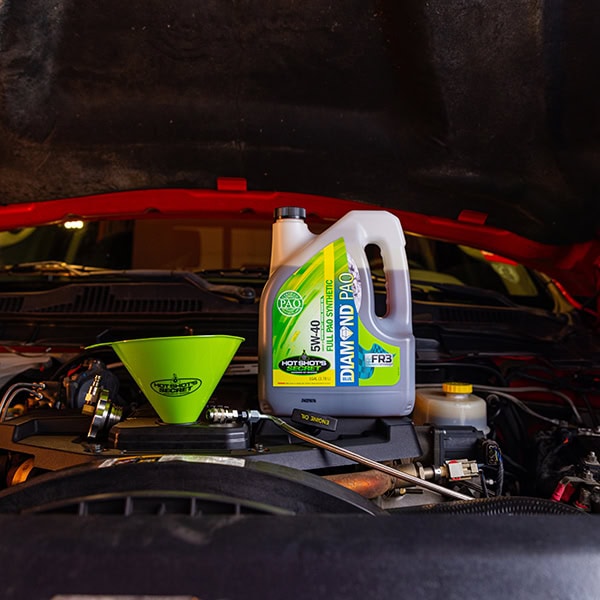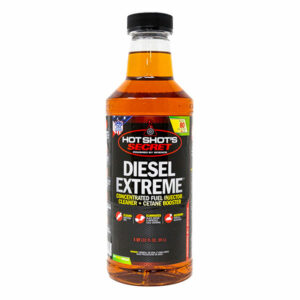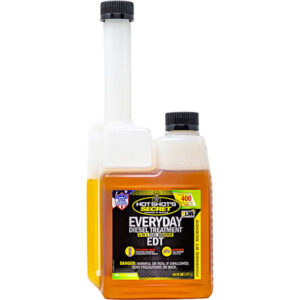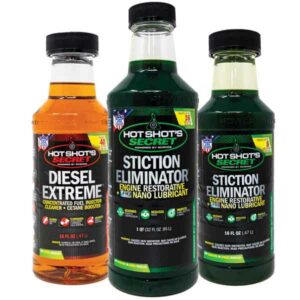
Cummins inline-six diesels have powered Dodge and Ram trucks for over three decades, and earned a die-hard reputation for intense reliability and robust power among owners and enthusiasts. This guide explores the primary engine generations since 1989 and shows you how choosing top Cummins diesel engines can have a profound impact on dependability, towing and long-term longevity.
From the P-pumped 5.9L 12‑valve icons to the stout mid-fourth-gen 6.7L workhorses, we line up the standouts that deserve to be on your shortlist — highlighting the best years for Cummins diesel and which years to skip.
What Makes a Great Cummins Engine?
Standout Cummins engines blend proven reliability, smart fuel use, big torque, strong mod potential and confident towing manners, while avoiding the weak points evident in certain years and fuel and emissions setups. These factors are key drivers that move specific generations up or down in the rankings.
Some common evaluation criteria include:
- Reliability and longevity: Earlier 5.9L 12‑valve engines are celebrated for simplicity and the absence of complex emissions controls, while mid–fourth‑gen 6.7Ls are favored for balanced power and service life.
- Horsepower and torque: From about 160 hp/400 lb‑ft in early 5.9Ls to well over double in later 6.7Ls, Cummins boosted power and drivability, delivering higher output and stronger pulling across Ram HD models.
- Fuel economy: Inline‑six efficiency plus EPA‑2010 SCR systems delivered up to 6% better mpg versus prior models, with 2013 updates (VGT tuning, high‑efficiency pumps, single ECM) further improving durability and fuel economy.
- Towing and hauling capability: The 6.7L’s VGT turbo with integrated exhaust brake improves downhill control, and 2011-2018 manual-transmission options add control when hauling heavy loads — key advantages when towing frequently.
- Upgrade/mod potential: Classic 5.9L 12‑valve P‑pump trucks are prized for their rebuildability and tuning. Late 2nd and 3rd generation 24‑valve 5.9Ls are also easy to modify and deliver durable, high-torque performance.
- Common problems/failure points: Some early 24-valve trucks, dating from mid-1998 to 2001, used ‘53’ blocks that are known to crack, and the factory fuel pump is a known weak point often addressed with upgrades. Early 6.7Ls exhibited emissions-related issues that mid-cycle updates improved.
A Breakdown by Generation of the Evolution of Cummins Engines
The Cummins-powered Ram and Dodge lineup has evolved from ultra-simple 5.9L mechanical engines to high-output 6.7L engines with advanced aftertreatment. Key differentiators across the generations include refined emissions hardware, better fuel systems and remedies for known weak points that influence owner experience.
Let’s review four major Dodge and Ram Cummins engines through the years, highlighting the strengths and weaknesses of each.
5.9L 12-Valve (1989–1998)
The 5.9L 12-Valve is known for mechanical simplicity, durability and ease of service. Early models lacked complex emissions controls, which bolstered reliability. In 1994, 12‑valves added the Bosch P7100 P‑pump, prized for reliability and tuning.
This option is equipped with older technology and lower output by modern standards (roughly 160 hp in early years), though torque was strong for the time.
5.9L 24-Valve (Mid-1998–2002)
Cummins moved to a 24‑valve head and electronic fueling, which increased the capability over the 12‑valve and modernized the engine.
Early 24-valve engines are known for a less‑reliable fuel pump and the 53 block casting issue. Many owners proactively upgrade the pump and avoid engines with the 53 casting.
5.9L Common Rail Cummins (2003–2007)
Later 24‑valve 5.9Ls (third‑gen trucks) are widely regarded as excellent, with higher outputs, easy modding and durable, high‑torque performance, making them aftermarket favorites.
While generally strong, the era reflects trade-offs you’ll weigh in a 5.9 Cummins vs. 6.7 Cummins comparison — less emissions complexity than early 6.7Ls but missing the later 6.7L’s torque gains.
Early 6.7L engines (Mid-2007–2018)
Displacement increased to 6.7L via a larger bore and stroke, bringing significantly higher horsepower and torque. The addition of a VGT turbo with integrated exhaust brake enhances drivability and control.
The introduction of EGR/DPF and later SCR added emissions complexity. Early fourth‑gen trucks saw emissions‑related issues, though mid‑generation reliability is excellent, with up to 6% fuel‑economy gains reported in the 2010‑era SCR systems.
Later 6.7L (2019–Present)
The latest 6.7L Rams are widely regarded as incredibly powerful and the most advanced to date, reflecting the ongoing rise in output and refinement.
Long‑term data is still developing, though some recent models have minor reported issues.
The 3 Best Cummins Engines
The three Cummins eras highlighted stand out for different reasons — bulletproof simplicity, tuner-friendly performance and modern power.
1. The Most Reliable Classic: 5.9L 12-Valve (1989–1998)
Mechanical simplicity, longevity and ease of maintenance made the early 12-valve legendary. These engines are easy to work on, making upgrading and tuning a pleasure. They are prized for their durable, long-lasting performance and lack of modern emission controls, which boosts reliability.
The only downside is that the output is modest by modern standards, with early trucks only having around 160 horsepower despite strong torque.
2. The Tuner’s Dream: 5.9L Common Rail (2003–2007)
Compared with the early 6.7L engines that introduced EGR and DPF, these 5.9L trucks avoid aftertreatment complexity, making them an appealing option to many owners. Third-gen 24‑valve 5.9Ls are widely regarded as excellent, with higher outputs, high-torque performance and strong mod friendliness. The CP3 pump is generally reliable, although injector wear is a known issue.
3. The Modern Powerhouse: 6.7L (2019–Present)
New Cummins-powered Ram trucks are regarded as incredibly powerful and deliver the platform’s highest torque and towing capability to date. Mature SCR-based aftertreatment is associated with up to 6% better fuel economy versus prior models, reflecting the ongoing focus on efficiency accelerated with 2007+ standards. Modern models also feature a stronger block and CP3 pump, which was reintroduced in some years. However, adding emissions hardware increases complexity and cost.
The Most Reliable Cummins Engine Years
The top picks for reliability across Cummins generations reflect widely recognized strengths. For quick context on a 12-valve vs. 24-valve Cummins choice, the 1994–1998 P‑pump 12‑valve is a top pick for simplicity, while later 24-valve engines are favored for power and electronic control.
Find our top choices below:
- 1994–1998 (12-Valve): Pure mechanical reliability. The 1994-1998 P-pump 12-valve is widely considered the most reliable due to its minimal emissions hardware.
- 2006–2007 (Common Rail): Peak of 5.9L performance. Third-gen trucks are noted for higher outputs, smooth drivability and strong mod potential.
- 2019–Present (6.7L): Best blend of power, emissions updates and durability in the latest generation.
Engine years to avoid include:
- VP44 era (Mid-1998–2002): Known lift/fuel pump weaknesses.
- Early 6.7L (Mid-2007–2012): Issues with EGR/DPF and turbo clogging were reported.
Which Cummins Engine Is Right for You?
Useful Cummins engine comparisons should evaluate how you will use the truck and reflect your personal priorities. The best Cummins engine is the one that fits your needs and applications.
These are some popular picks based on specific uses to help guide your decision:
| Application | Recommended Cummins Engine | Standout Features |
| Towing and heavy-duty work | Late-model 6.7L | Offers the strongest torque and a mature emissions and aftertreatment package, providing balanced performance and efficiency. |
| Easy maintenance and long life | 12-Valve | Features mechanical simplicity, a lack of modern emissions hardware and P-pump durability, making it a classic standout. |
| Performance and tuning | Common Rail 5.9L | Provides higher output and easy modding without early 6.7L emissions complexity. |
| Budget and reliability | Early 5.9L models | Deliver straightforward servicing and are known for durable and long-lasting performance. |
Explore Scientifically-Proven Performance Upgrades From Hot Shot’s Secret
Keep your Cummins running like new with regular maintenance, cleaning and regular oil and fluid changes — then boost those results with Hot Shot’s Secret. All our products are powered by science and come with the best money-back guarantee in the industry.
Some of the products that will reduce common engine problems and extend the longevity of your engine include:
- Stiction Eliminator: Dissolves internal deposits, frees sticky components and revitalizes older engines.
- Diesel Extreme: Gives your fuel system a safe, deep clean.
- EDT: Supports ongoing injector and fuel system health.
- FR3®: Reduces friction and improves engine responsiveness.
- Blue Diamond Oil: Provides maximum protection for performance and longevity.
Get Cummins Packs That Work
Hot Shot’s Secret has taken the guesswork out of getting the best from your Cummins engine by offering the following two ready-made product bundles tailored for Cummins owners:
- Cummins Cleanout Pack: The ideal initial treatment for 5.9L and 6.7L pickups.
- Cummins Performance Pack: The perfect product trio for preventive maintenance and enhanced performance.
Got questions? For expert one-on-one guidance or customized product recommendations for your Cummins engine, contact Hot Shot’s Secret today!




